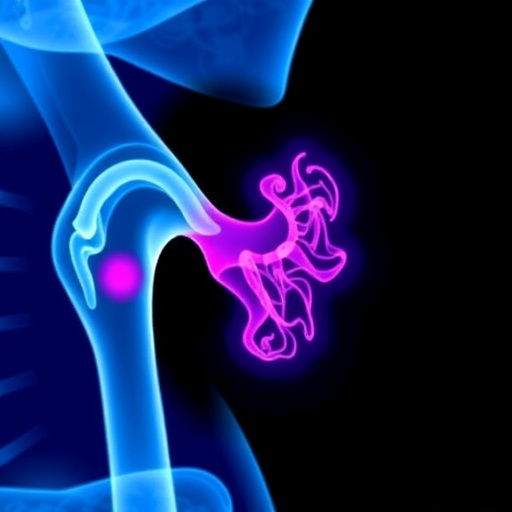
A recent study published in the Journal of Cancer Research and Clinical Oncology has pushed the boundaries of our understanding of oral squamous cell carcinoma (OSCC) by examining the effects of Maackia amurensis seed lectin (MASL) on OSCC cell dynamics. This research, led by a team that includes Yin, Holdcraft, and Helmig, emphasizes the potential therapeutic implications of lectins, particularly MASL, in cancer treatment. As OSCC continues to pose significant challenges due to its aggressive nature and high recurrence rates, innovative approaches like this one could offer new avenues for intervention and management.
The study’s findings highlight how MASL significantly alters OSCC cell morphology, which refers to the shape and structure of the cells. Understanding these morphological changes is critical, as cell shape can dramatically affect a tumor’s behavior and its interaction with the surrounding microenvironment. The research indicates that cells treated with MASL exhibit distinct morphological features, suggesting that lectins can influence the structural integrity and functional capabilities of OSCC cells. Such insights could be invaluable for therapeutic strategies aimed at disrupting malignant cell behavior.
In addition to the morphological changes, the study also focused on the expression of podoplanin (PDPN) in OSCC cells following MASL treatment. PDPN is a marker often associated with increased aggressiveness in various types of cancers, including oral cancer. By assessing how MASL affects PDPN levels, the researchers were able to evaluate whether this lectin could potentially hinder tumor progression. The results show a marked reduction in PDPN expression, implying that MASL might suppress the invasive characteristics of OSCC cells, presenting an exciting potential for newer cancer therapies.
Furthermore, the phase 1 clinical trial component of the research provided valuable insights into the live effects of MASL on cancer growth and motility. Preclinical models often suggest significant outcomes, but clinical validation is necessary for any prospective treatment. The team conducted rigorous trials to measure the effect of MASL on tumor growth rates and motility, further establishing its therapeutic applicability. The impact on cell migration and proliferation rates showcased a potentially critical advantage in halting the advance of OSCC.
Another noteworthy aspect of this investigation is the multi-faceted anti-cancer properties of MASL. The research not only looked at the surface phenomena associated with lectin treatment but also delved into the underlying cellular mechanisms. The authors examined the signaling pathways influenced by MASL and identified key regulators of cell growth and motility. This detailed exploration of the molecular interplay opens doors for future studies that could unravel even more intricate networks at play within cancer cells.
This research not only reinforces existing literature regarding the use of plant-derived lectins in cancer therapy but also positions MASL as a unique candidate due to its specific actions on OSCC cells. The findings could lead to further investigations into natural product chemistry and the extraction of similar compounds with potential anti-cancer properties. As many scientists and medical professionals aim to harness the benefits of nature in contemporary medicine, this work stands at the forefront of that movement, proposing a natural avenue for cancer treatment.
Moreover, the implications of this study extend beyond just the laboratory; they reach into the realm of clinical practice. Understanding how MASL alters OSCC cell dynamics could inform surgeons and oncologists in developing combined therapeutic strategies that may lead to enhanced patient outcomes. The study’s authors express a keen interest in promoting further exploration to initiate larger-scale clinical trials. Engaging with a broader patient population could validate findings and potentially lead to the integration of MASL into standard treatment protocols in the future.
With each discovery related to MASL and OSCC, we glean better insights into the complexities of oral cancers and their treatment. The relationship between dietary components, like lectins, and cancer biology may pave the way for novel dietary recommendations or supplements that could enhance existing treatments. Imaging techniques paired with MASL should also be considered in future study designs, as they could allow researchers to visualize and quantify the degree of change in OSCC cell populations and their responsiveness to therapy.
As an important next step, researchers foresee multi-disciplinary collaborations aimed at further dissecting the biochemical pathways influenced by MASL. For example, integrative approaches that combine the expertise of oncologists, pharmacologists, nutritionists, and biochemists would accelerate the understanding and application of lectins like MASL beyond just OSCC. Innovation often arises from collaboration, and this research is a critical instance where synergy amongst various scientific disciplines might yield transformative medical advancements.
Moreover, the broader implications of plant-derived compounds extend beyond just cancer research. Their potential could inspire investigations into various diseases and conditions where inflammation and cell proliferation are key components. With a vast array of plant species untested or under-explored, the future of therapeutic development could hinge on breakthroughs in natural products research akin to that involving MASL.
In summary, the study conducted by Yin et al. represents a pivotal contribution to the field of cancer research, especially in tackling the formidable challenges posed by OSCC. It illuminates the critical intersection of natural products and modern medicine, advocating for a future where novel therapies can emerge from understanding plant-based compounds. As clinical practice evolves, this research serves as both a reminder of nature’s powerful potential and an inspiration for ongoing scientific inquiry into the fight against cancer.
With the findings of this research at hand, the future promises further investigations into MASL’s capabilities while evaluating its efficacy in real-world clinical settings. The overlying theme suggests an essential acknowledgment of how various avenues, including phytochemical research, may soon hold keys to overcoming significant health challenges. One can only hope that by building on this groundwork, we may witness an evolution of therapeutic strategies that change the landscape for cancer treatment in the coming years.
Subject of Research: Effects of Maackia amurensis seed lectin (MASL) on OSCC cell morphology, PDPN expression, growth, and motility.
Article Title: Effects of Maackia amurensis seed lectin (MASL) on OSCC cell morphology, PDPN expression, growth, and motility in a phase 1 clinical trial.
Article References:
Yin, A.C., Holdcraft, C.J., Helmig, T.J. et al. Effects of Maackia amurensis seed lectin (MASL) on OSCC cell morphology, PDPN expression, growth, and motility in a phase 1 clinical trial.
J Cancer Res Clin Oncol 151, 218 (2025). https://doi.org/10.1007/s00432-025-06265-z
Image Credits: AI Generated
DOI: 10.1007/s00432-025-06265-z
Keywords: OSCC, Maackia amurensis, lectins, PDPN, cancer therapy.
Tags: cancer cell dynamicscancer therapy innovationslectins in cancer researchMaackia amurensis seed lectinmorphological features of cancer cellsoral squamous cell carcinoma treatmentOSCC cell morphology changesOSCC management strategiesOSCC recurrence challengespodoplanin expression in OSCCtherapeutic implications of lectinstumor microenvironment interactions




